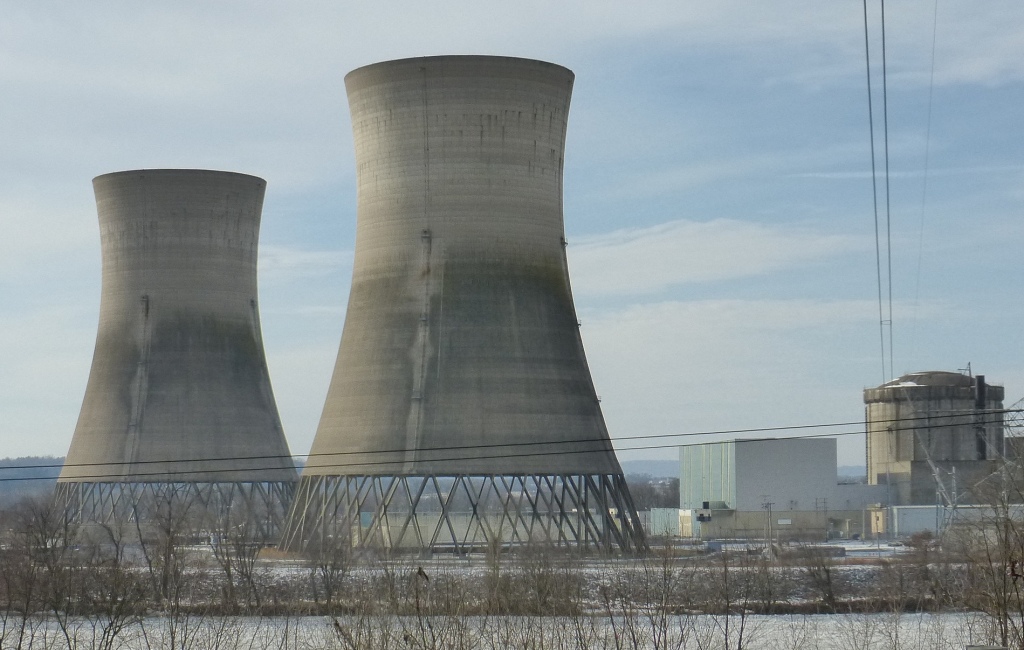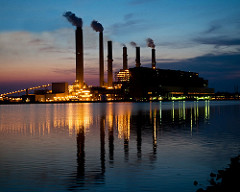By Saahel Alimagham, SFSU 2021
The Metsamor Nuclear Power Plant is located in Metsamor, Armenia and is considered to be the world’s most dangerous power plant. This plant is one of the only remaining plants in the world that was built without containment, a critical safety feature. Metsamor was built upon some of the world’s most earthquake vulnerable zones, creating a constant threat to the safety of the surrounding cities and individuals. [1] It is considered to be so dangerous because in the event of a natural disaster, the lack of containment would allow harmful gasses and pollution to pour out directly into the environment. The European Union has urged Armenia to close down the site for years, and offered $289 million to finance shutting down the plant, which Armenia declined.

Steam rising from the Metsamor Nuclear Power Plant (GettyImages)
Armenia’s unstable history with power
Prior to the construction of the Metsamor power plant, Armenia faced massive barriers in finding a stable energy source. Due to conflict between Armenia and other regions, most neighboring countries have closed their trading borders with Armenia, cutting off routes for other energy sources such as oil and gas. [2] Thus, a nuclear energy source was the only option for Armenia, and the plant was built in 1976. Twelve years later in 1988, a massive earthquake hit Armenia, killing over 25,000 people and leaving half a million individuals without a home. Thankfully, the plant withstood the quake but officials were still weary. The plant was shut down in fears of it being damaged if another earthquake happened. When Metsamor was shut down, Armenia faced extreme energy poverty. Citizens were without power for most of the day, suffering in the cold winter months without any heat. Severe power shortages oftentimes left individuals without electricity for a week in the height of the winter. This went on for about six years, until the country decided to reopen the plant. [3]

Sacrificing a healthy life for energy
A sacrifice zone is defined as a place that is written off for environmental destruction in the name of a higher purpose, such as the national interest. Metsamor, Armenia is precisely that. Living so close to such a massive radiator has direct impacts on the town. Cut up radiator bits and other pollution are prevalent around the city. Clean drinking water is not very accessible and there is heavy water pollution. Metsamor’s air quality is immensely poor and low in quality. Many of the residents are incredibly dissatisfied with the quality of life and find it draining and troubling to spend time in their city. [4] As stated before, the Metsamor plant was built without adequate containment. That being said, if there were to be a natural disaster that damages the plant, the dangerous toxins and chemicals would directly harm and affect Metsamor and its citizens. Before Metsamor was built, the town experienced constant power outages that would sometimes last weeks which devastated the city. The residents of Metsamor are forced to sacrifice having safe buildings, adequate air quality and water accessibility for power. [3] There is virtually no local pushback against the powerplant because it provides jobs to the locals and they are terrified of having to live through such an extreme power shortage once again. [5] The plant provides the country with 33% of its energy, so the majority of Armenian citizens are benefitting from it, while the residents of Metsamor are paying the harmful costs of the plant. They have to sacrifice one source of safety for another, and the residents have no choice but to accept the potentially harmful effects of the plant.
Rich in energy, poor in life
The city of Metsamor is poor and run down, riddled with leaking roofs with benches and structures built out of old radiator bits. Those living in parts of Armenia away from Metsamor, are benefiting from energy security and not much negative impact from the plant. However, they are not facing the challenges and injustices of living near the plant. The residents of the town live in tiny makeshift homes, usually with no kitchen or stable structure. The homes, barely big enough for a single person to live comfortably, are often packed with seven or eight other household members. [6] Residents of the town often complain about the psychological and physical negative health impacts living in Metsamor has given them. The majority of the city either actively works for the power plant, or has retired from working for the power plant. This is a classic example of a resource curse caused by a lack of local control. Those who live near the plant are working in unsafe conditions tending to it, and still live in an impoverished city with lack of resources. While those who do not live near metsamor, are benefitting from their work and living in safe conditions with a stable energy source.
Why you should care
Even though the Metsamor plant is considered to be one of the world’s most dangerous, virtually nothing is being done to shut it down. There is no mobilization from the locals due to fears and lack of support. By bringing awareness to the issues the plant is causing to the citizens of Armenia and creating a pushback against the supporters of the plant, change will come. The people of Armenia do not have anybody fighting for them and their environment, so outside support is crucial. Shutting the Metsamor plant is a key step in helping keep our Earth alive.
REFERENCES
[1] Lavelle, M., & Garthwaite, J. (2011, April 14). Is Armenia’s Nuclear Plant the World’s Most Dangerous?Science. https://www.nationalgeographic.com/science/article/110412-most-dangerous-nuclear-plant-armenia.
[2] Tomzyck, J. (2019, July 22). The Past, Present and Uncertain Future of the Metsamor Nuclear Power Plant. EVN Report. https://www.evnreport.com/economy/the-past-present-and-uncertain-future-of-the-metsamor-nuclear-power-plant.
[3] Kenneth Dickerman, S. M. (2020, October 1). Perspective | Is this place in the shadow of the ‘world’s most dangerous nuclear plant’?The Washington Post. https://www.washingtonpost.com/news/in-sight/wp/2017/11/01/is-this-place-in-the-shadow-of-the-worlds-most-dangerous-nuclear-plant/.
[4] Pollution in Metsamor. (n.d.). https://www.numbeo.com/pollution/in/Metsamor-Armenia.
[5] Iskender Aydin, C. (2019, August 18). Metsamor Nuclear Power Plant, Armenia: EJAtlas. Environmental Justice Atlas. https://ejatlas.org/conflict/metsamor-nuclear-power-plant.
[6] YouTube. (2018). Poverty-stricken Armenians pin hopes on new government | Al Jazeera English. YouTube. https://www.youtube.com/watch?v=sHkKa38oVp4.











